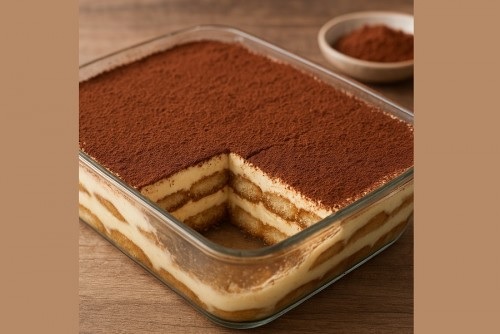Classic Tiramisu: The Quintessential Italian Dessert

When it comes to iconic Italian desserts, Tiramisu stands out as a beloved classic that has won hearts worldwide. Its rich layers of coffee-soaked ladyfingers combined with a creamy mascarpone filling and a dusting of cocoa powder create a perfect harmony of flavors and textures. Whether served at a festive dinner or enjoyed as a casual treat, Tiramisu offers a taste of Italy’s culinary artistry in every bite.
Origins and History
The word Tiramisu translates to “pick me up” or “cheer me up” in Italian, a fitting name given its energizing combination of espresso and cocoa. Though the exact origins are debated, most food historians trace this dessert back to the Veneto region in Northern Italy, emerging in the late 1960s or early 1970s. Its rapid rise in popularity was propelled by its relatively simple preparation paired with decadent taste.
What Makes Tiramisu Special?
Tiramisu’s magic lies in its layers. The base is made of ladyfinger biscuits (savoiardi), which are delicately dipped in strong brewed coffee — sometimes enhanced with coffee liqueur like Marsala or Kahlua for extra depth. These soaked biscuits provide a moist yet firm foundation.
The luscious middle layer consists of a mascarpone cheese mixture blended with whipped egg yolks, sugar, and beaten egg whites, creating a silky and airy texture. This creamy filling balances the bittersweet coffee flavor perfectly.
The dessert is then finished with a generous dusting of unsweetened cocoa powder, adding a touch of bitterness that contrasts beautifully with the sweetness of the mascarpone.
Classic Tiramisu Recipe Overview
To make a traditional tiramisu, start by preparing strong espresso or coffee and letting it cool. Mix egg yolks and sugar until creamy, fold in mascarpone cheese, and gently incorporate whipped egg whites to maintain lightness. Quickly dip each ladyfinger into the coffee, layer them in a dish, and spread the mascarpone mixture over. Repeat the layers, finish with mascarpone, dust with cocoa powder, and refrigerate for at least 4 hours to let the flavors meld.
Tips for the Perfect Tiramisu
Use fresh, high-quality mascarpone cheese for the best creaminess.
Avoid soaking the ladyfingers too long in coffee to prevent sogginess.
For an adult twist, add coffee liqueur or a splash of dark rum.
Let the tiramisu chill overnight if possible — it enhances the flavor and texture.
For safety, especially if serving children or guests who prefer it, use pasteurized eggs or substitute with whipped cream.
Variations and Modern Twists
While classic tiramisu remains a favorite, many chefs have experimented with flavors such as chocolate tiramisu, fruit-infused versions (like strawberry or mango), or even single-serve tiramisu jars. Vegan and egg-free alternatives have also gained popularity, using ingredients like coconut cream or tofu mascarpone.
Conclusion
Classic tiramisu is more than just a dessert; it’s an experience—a perfect blend of rich, bold coffee and creamy sweetness that delights the senses. Its timeless appeal and relatively simple preparation make it a must-try for anyone looking to explore Italian cuisine at home. Whether you enjoy it with a cup of coffee or as a celebratory finale, tiramisu promises a little taste of la dolce vita — the sweet life.




















